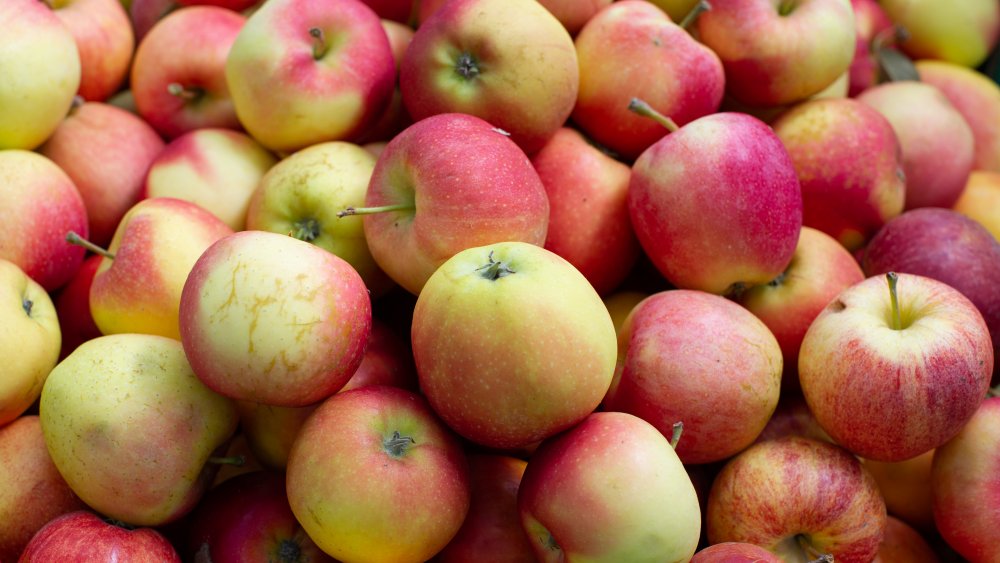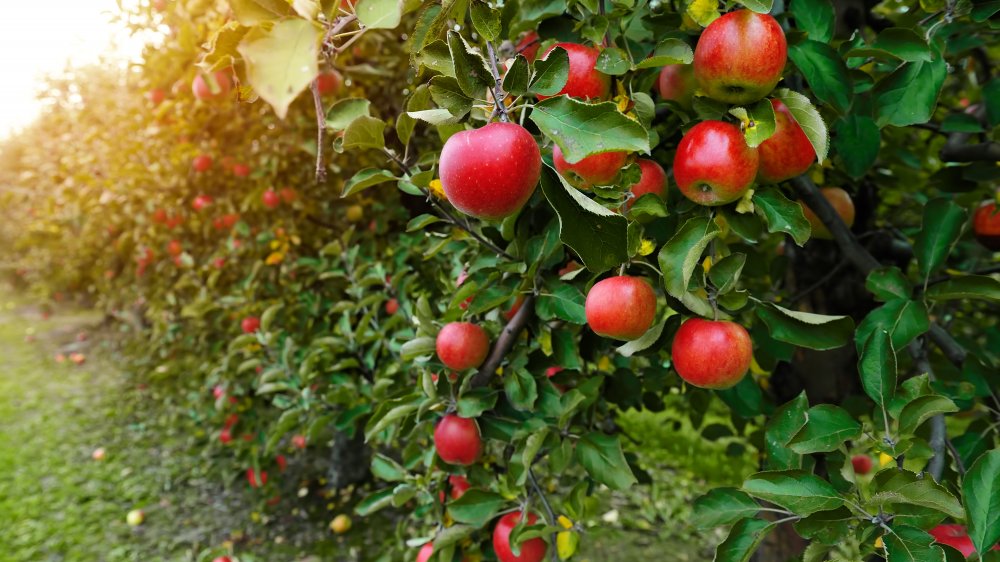The Real Reason So Many Apple Varieties Are Extinct
According to USApple, while there are over 100 apple varieties produced by farmers in the United States today, you will most commonly only see around nine of these in grocery stores. Hearing that small amount might make you wonder what flavors you're missing out on, but compared to the number of apple varieties that have disappeared from our collective palate, consumers are being kept from an entire hidden universe. Mother Jones reports in the mid-1800s, there were thousands of varieties of apples growing across the United States. It's possible industrial agriculture is responsible for this loss of diversity, as it chose to focus on a few apples to promote worldwide, leaving others to languish.
When U.S. colonists first came to the country, many planted apple seeds as they traveled west and established farms. One man, Johnny "Appleseed" Chapman, was responsible for planting thousands of seeds across the frontier, in an attempt to aid new settlers who were at the time required to plant 50 apple or pear trees to qualify for land grants. These settlers were less concerned with controlling apple varieties, as the fruits were used for a number of functions outside of human consumption.
As farmers discovered new, exceptional apples, grafting became more popular, as they wished to grow trees that would replicate these desirable fruits. This was before the USDA or big agriculture began to promote and incentivize the large, hardy apples you see in the supermarket today which prioritize shelf life and durability over flavor and uniqueness.
Overzealous prohibition supporters helped kill off many apple varieties.
Grafting is the process by which every apple variety is reproduced, which allows for uniformity and reliability. It is essentially making a clone of one tree by splicing it onto an already flourishing plant, which is referred to as rootstock. Apple seeds do not contain exact replicas of the tree they are produced by, but a mixture of that tree and another mystery tree that provided half of the seeds' DNA. Pollen is carried from this mystery tree by bees to the "mother tree" which bears the fruit. Most wild apple varieties produced naturally are small, hard, and sour, while desirable qualities like red coloring, sweetness, and large size are qualities that humans have bred into apples.
Another cause of the decline of some apple varieties can be traced to prohibition. Mother Jones outlines the case of the Harrison apple, which was prized for its champagne-like hard cider-making qualities. The Harrison apple all but disappeared when the drink was outlawed. This extinction is mirrored in other high-tannin apple varieties, which is a good quality for making hard cider, but not so wonderful to eat. Serious Eats says that during prohibition, supporters of the Volstead Act began burning apple orchards known to produce cider apples, leading many farmers to pivot from these more diverse varieties to more common, sweeter apples for consumption.

